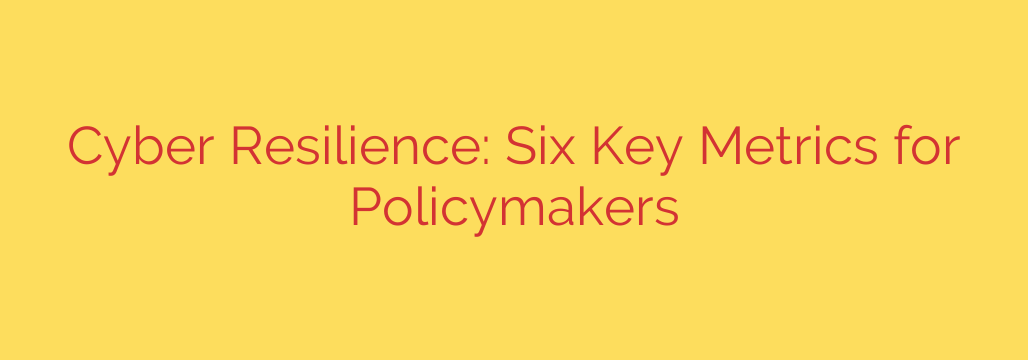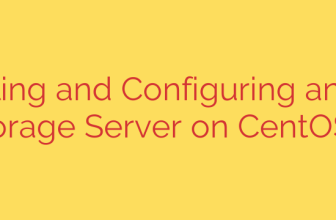
Is Your Business Truly Cyber Resilient? 6 Metrics You Need to Track
In today’s digital landscape, the question is no longer if a cyberattack will happen, but when. While robust cybersecurity defenses are essential for prevention, they are not foolproof. True preparedness lies in cyber resilience—an organization’s ability to withstand, respond to, and recover from an attack while minimizing disruption and damage.
But how do you know if your organization is resilient? Simply having security tools in place isn’t enough. To effectively manage and improve your posture, you must measure it. By tracking the right metrics, you can move from a reactive to a proactive state, transforming abstract goals into tangible, data-driven strategies.
Here are six critical metrics every leader should be tracking to build and validate their organization’s cyber resilience.
1. Threat Environment Awareness
You can’t defend against an enemy you don’t understand. A fundamental measure of resilience is how well your organization comprehends its specific threat landscape. This goes beyond generic warnings about malware or phishing.
Effective threat awareness means you can answer:
- Who are the most likely threat actors to target our industry and our organization specifically?
- What are their motivations (financial gain, espionage, disruption)?
- What are their common tactics, techniques, and procedures (TTPs)?
Actionable Tip: Invest in threat intelligence services and conduct regular risk assessments that map potential threats to your most critical assets. A low score here indicates you are flying blind, while a high score shows you are proactively anticipating your adversary’s next move.
2. Speed of Detection and Response
When an attack occurs, time is your greatest enemy. The longer an intruder remains undetected in your network, the more damage they can inflict. That’s why two of the most vital metrics are Mean Time to Detect (MTTD) and Mean Time to Respond (MTTR).
- Mean Time to Detect (MTTD): The average time it takes for your team to identify a security incident after it has occurred.
- Mean Time to Respond (MTTR): The average time it takes to contain, eradicate, and recover from that incident once it has been detected.
A low MTTD and MTTR are hallmarks of a highly resilient organization. These metrics demonstrate the efficiency of your security monitoring tools, the skill of your security team, and the effectiveness of your incident response plan.
3. System Recovery and Business Continuity
Resilience is ultimately about getting back on your feet. How quickly can your organization restore critical operations after a major incident like a ransomware attack? This is measured by two key objectives:
- Recovery Time Objective (RTO): The maximum acceptable amount of time that a critical system or application can be offline.
- Recovery Point Objective (RPO): The maximum amount of data loss that can be tolerated, measured in time (e.g., 1 hour of data, 24 hours of data).
Regularly testing your disaster recovery and backup plans is non-negotiable. If your actual recovery times exceed your stated RTO, or if you lose more data than your RPO allows, you have a critical resilience gap that needs immediate attention.
4. Effectiveness of Security Controls
It’s easy to become complacent after deploying a firewall, antivirus software, or an intrusion detection system. But are these controls actually working as intended? Measuring their effectiveness is crucial for understanding your true defensive capabilities.
You can measure this through controlled testing:
- Penetration Testing: Ethical hackers simulate real-world attacks to identify exploitable vulnerabilities.
- Vulnerability Assessments: Automated scans search for known weaknesses in your systems and software.
- Breach and Attack Simulation (BAS): Tools that continuously test your defenses against the latest attack techniques.
The results provide a clear, unbiased metric of your security performance. A high number of critical, unpatched vulnerabilities indicates poor resilience, while successful defense against simulated attacks validates your investment in security technology.
5. The Human Factor: Security Awareness
Technology alone cannot protect you. Your employees are often the first line of defense, but without proper training, they can also be your weakest link. Measuring the security awareness of your workforce is a powerful indicator of your organization’s resilience to social engineering tactics like phishing.
The most common metric here is the click-through rate on simulated phishing campaigns. A high click rate or a high number of employees who submit credentials on fake login pages is a major red flag. Conversely, a low click rate coupled with a high reporting rate shows that your team is a security asset, not a liability.
Actionable Tip: Implement an ongoing security awareness training program that includes regular phishing simulations. Track departmental and organizational performance over time to measure improvement.
6. Supply Chain and Third-Party Risk
Your organization’s security is no longer defined by its own four walls. You are connected to a vast network of vendors, partners, and suppliers, and a breach in their systems can easily become a breach in yours.
Measuring third-party risk involves a thorough assessment of the security posture of your critical vendors. This includes evaluating their security policies, compliance certifications, and incident response capabilities. A resilient organization has a clear inventory of its vendors, understands the data they have access to, and has a formal process for managing that risk. Ignoring this metric leaves a massive, unmonitored backdoor into your network.
By consistently measuring and working to improve these six areas, you can transform cyber resilience from a vague concept into a core, data-driven business function. It’s a continuous journey of assessment, adaptation, and improvement that ensures your organization is prepared not just to survive an attack, but to emerge stronger.
Source: https://www.helpnetsecurity.com/2025/10/09/zurich-governments-cyber-resilience-metrics/








